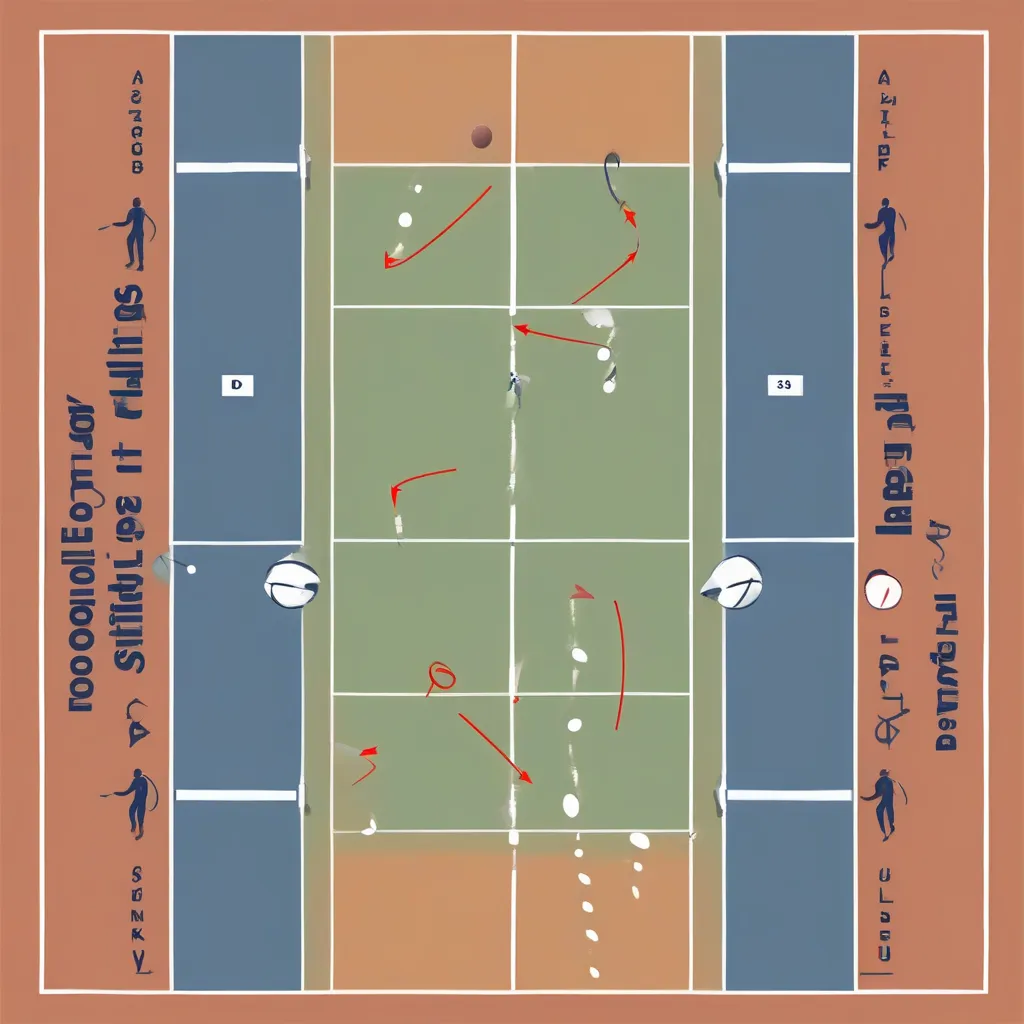Imagine this: you’re down a point, the pressure’s on, and your opponent is waiting for your next move. What shot do you choose? Mastering pickleball isn’t just about hitting the ball hard; it’s about strategic shot sequencing—knowing which shot to play, when, and why. This is your guide to gaining a tactical advantage on the pickleball court through smart shot selection.
Understanding the Basics of Pickleball Shot Sequencing
Pickleball shot sequencing is the art of linking together different shots to create winning rallies. It’s about more than just reacting to your opponent; it’s about dictating the pace and direction of the game. This requires a deep understanding of the different types of shots and their strategic implications.
The Fundamental Pickleball Shots
- Serve: The starting point of every rally. A consistent and strategically placed serve can set you up for success.
- Return of Serve: The first opportunity to gain an advantage. A deep return can push your opponents back and create openings.
- Third Shot Drop: A crucial shot in pickleball, often used after the return of serve to bring the game to the net.
- Dink: A soft shot played at the net, designed to force errors and create attacking opportunities.
- Volley: A powerful shot hit in the air before it bounces, often used to put the ball away.
- Lob: A high, arcing shot that goes over your opponents’ heads, used defensively or to reset the point.
Why is Shot Sequencing Important?
Effective shot sequencing disrupts your opponent’s rhythm, forces them into weaker positions, and creates opportunities for you to attack. Think of it like a chess match—each shot you play sets up the next one, leading to checkmate (or in our case, winning the point).
Developing a Tactical Approach
To build a strategic shot sequence, consider these key elements:
Court Positioning and Awareness
Knowing where you and your opponent are on the court is crucial. Are they at the net? Are they deep in the court? This information informs your shot selection.
Opponent’s Weaknesses
Exploiting your opponent’s weaknesses is key to winning. Do they struggle with volleys? Are their lobs predictable? Target these areas with your shot selection.
Your Strengths
Play to your strengths. If you have a powerful forehand, create opportunities to use it. If you excel at dinking, strategize to bring the game to the net.
Changing the Pace
Varying the speed and spin of your shots keeps your opponent guessing and off balance. Mixing up dinks with faster drives can be extremely effective.
Specific Shot Sequencing Examples
Let’s look at a few examples of effective shot sequencing:
The Third Shot Drop to Dink Sequence
A well-placed third shot drop forces your opponents to move forward, creating an opening for a dink. This sequence is designed to bring the game to the net, where you can gain control.
The Lob to Attacking Volley Sequence
A defensive lob can be used to reset the point and give you time to get to the net. Once at the net, you can capitalize on a weaker return with an attacking volley.
The Serve and Return Sequence
A deep serve can push your opponents back, setting up a return of serve that allows you to move forward. This sequence establishes an offensive position from the very beginning.
Drills for Improving Shot Sequencing
Practice makes perfect! These drills can help you improve your shot sequencing:
- Dink-Volley Drills: Practice transitioning from dinks to volleys to develop your touch and control at the net.
- Lob-Volley Drills: Work on your defensive lobs and your ability to capitalize on them with attacking volleys.
- Third Shot Drop-Dink Drills: Refine your third shot drop placement and practice transitioning to a soft dink.
 Pickleball Shot Sequencing Diagram
Pickleball Shot Sequencing Diagram
“In pickleball, strategy is just as important as skill. Mastering shot sequencing is the key to unlocking your full potential on the court.” – [Fictional Pickleball Coach]
Conclusion
Pickleball shot sequencing is a critical element of playing strategically and winning more points. By understanding the different types of shots, their strategic implications, and how to link them together effectively, you can gain a significant tactical advantage. Remember to consider your opponent’s weaknesses, your own strengths, and the overall flow of the game when choosing your shots. Practice these principles and drills regularly, and you’ll be well on your way to becoming a more strategic and successful pickleball player. Now it’s your turn! Share your favorite shot sequences and tips in the comments below. What strategies have worked best for you on the court?
- Baker, Joe (Author)
- English (Publication Language)
- Bond, Payton (Author)
- English (Publication Language)
- Anderson, Brian (Author)
- English (Publication Language)
- Palcic, Lisa (Author)
- English (Publication Language)
- Foster, Blake (Author)
- English (Publication Language)
- Carnot, Prem (Author)
- English (Publication Language)
- Hall, Dennis (Author)
- English (Publication Language)
- Callahan, John (Author)
- English (Publication Language)
- Publishing, Fitness Research (Author)
- English (Publication Language)
- Arthur, S. M. (Author)
- English (Publication Language)









